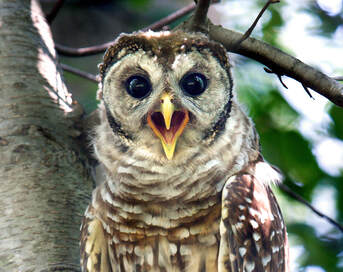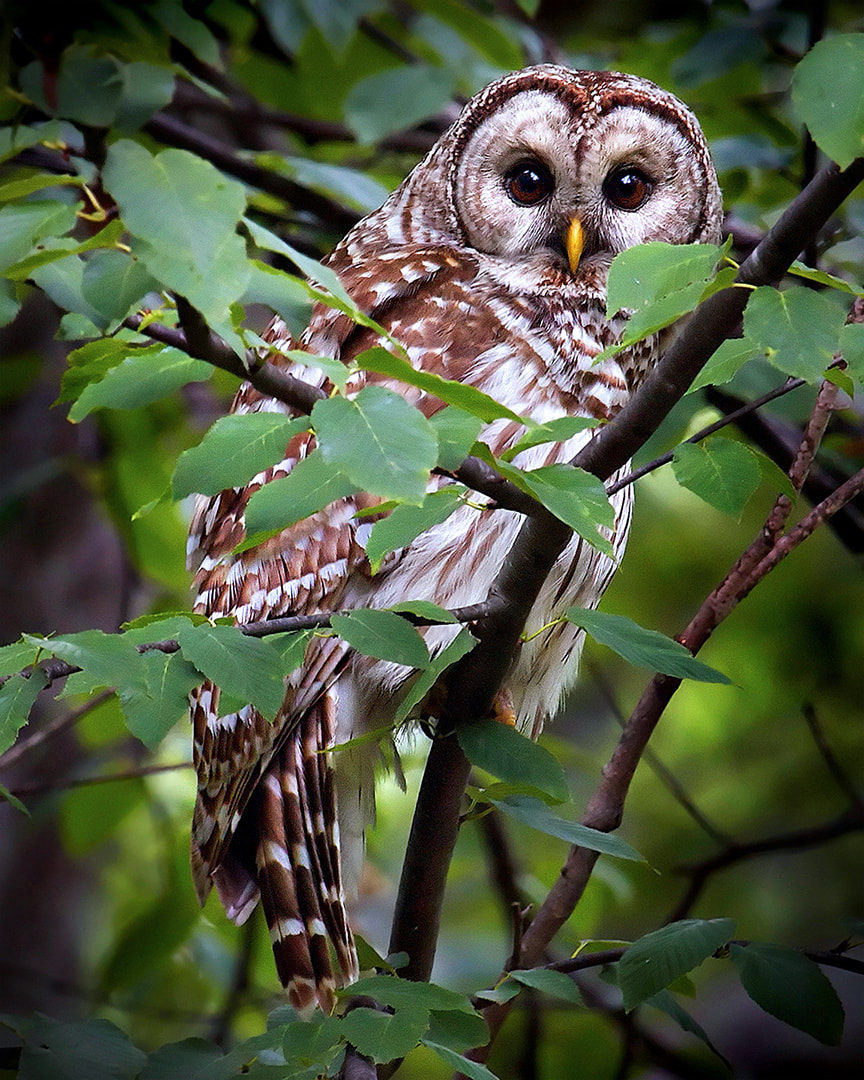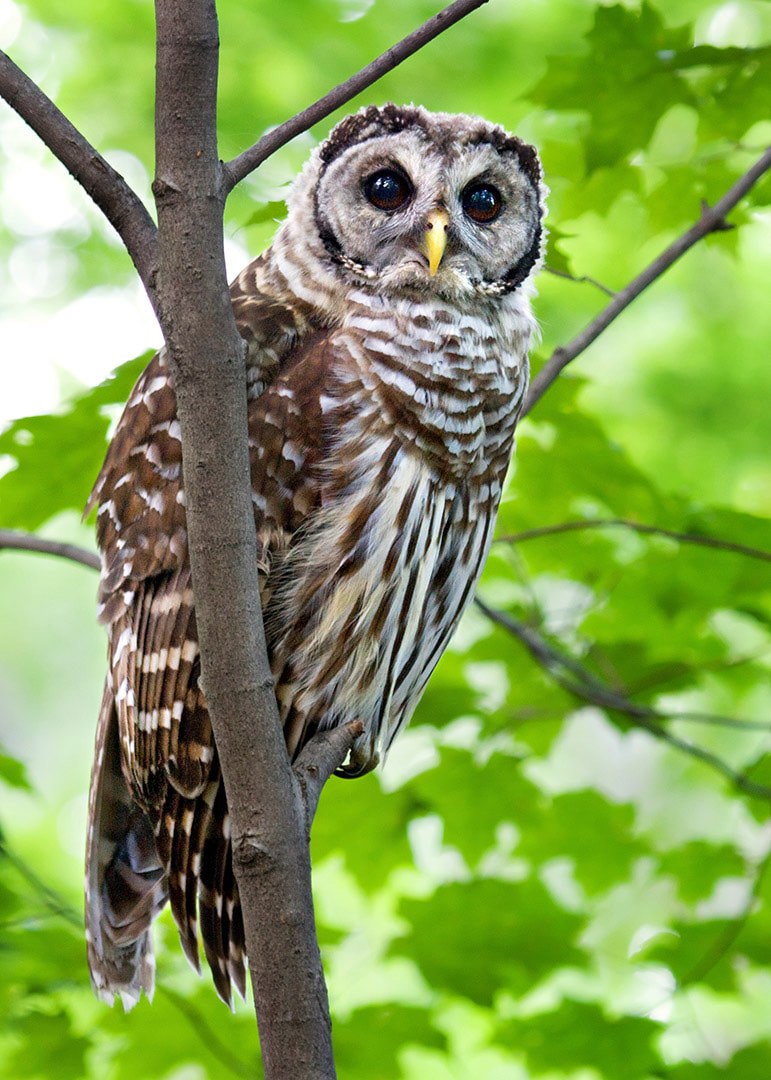Barred Owl (Strix varia)
|
Physical Description: Barred Owls weigh between 1 and 1.5 lbs. and have a 3-to-4-foot wingspan. They are primarily gray and brown with white bars, while their underside is white or tan with vertical streaks. Their eyes are dark brown, and their beak is yellow or white and almost covered by feathers.
Habitat: Barred owls live in mature forests and heavily wooded swamps. They hunt over farmland, open country, roadsides and rivers. Range: They live in the eastern United States, Canada, and Texas. They are also found in the Pacific Northwest. Diet: Barred Owls are carnivores and will eat insects, amphibians, reptiles, birds and mammals, including woodchuck, geese and herons. They are opportunistic hunters and will often eat easy-to-catch prey such as lizards, frogs, and small rodents. Life Span: They live up to 15 years in the wild, and 30 years in captivity. Social Structure: They establish long-term pair bonds. These owls nest in abandoned hawk or crow nests, large, deep hollows in trees or nest boxes. Females lay 2-3 (rarely 4-5) white eggs, with incubation all done by the female. The young will then fledge at 6 weeks old. Status: Least Concern1 Other: This owl is often heard calling “Hoo-hoo-to-hoo-oo, hoo-hoo to wha-aa” which sounds like “Who cooks for you, who cooks for you all?” Barred Owls are very vocal during the breeding season of February and March and also during late summer into early fall. They are one of the few owls that can be heard during the day as well. The name barred owl comes from the beautiful brown and buff vertical color streaks or bars on their chest. References: 1 https://www.iucnredlist.org/species/22689094/93217844 |









